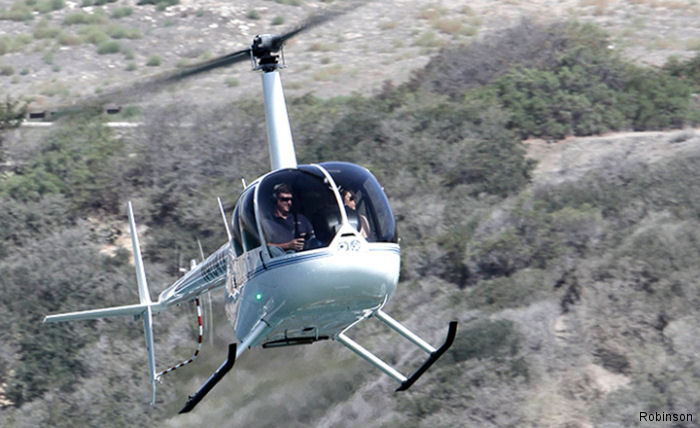
Robinson Helicopters, October 28, 2016 - “Robinson Helicopter Company shares the TAIC’s concern regarding the low-G mast bumping accident rate in New Zealand, which is significantly higher than in other parts of the world.
One key to reducing the rate is to understand why this type of accident is so prevalent in New Zealand compared to other countries.
The TAIC Watchlist refers to New Zealand’s mountainous terrain and high winds as possible causal factors. However, similar environmental conditions exist in many parts of the world. On the other hand, certain training, operational culture, and regulatory elements are specific to New Zealand.
In April of this year, company president Kurt Robinson, along with the two chief flight instructors of the Robinson Safety Course, traveled to New Zealand to present a pilot safety course and to meet with the TAIC, CAA [Civil Aviation Authority of New Zealand] and New Zealand flight instructors and examiners to discuss safety and training techniques. Discussions revealed that some training techniques which were being practiced in New Zealand deviated from the latest FAA [Federal Aviation Administration] and Robinson factory recommendations.
Changes in New Zealand are underway to harmonize training curricula with those in the United States. Robinson supports the training regulation changes the New Zealand CAA has been implementing over the past year.
Over the last 35 years Robinson has produced almost 12,000 helicopters which are flown all over the world in environmental conditions equivalent to or worse than those in New Zealand without incurring high accident rates. Although turbulence can create a momentary low-G condition, it is not by itself causal in low-G accidents. It must be coupled with an incorrect input or reaction by the pilot for a mast bump to occur. To date, Robinson helicopters have accumulated over 30 million flight hours and, when flown in accordance with the Pilot’s Operating Handbook, are safe and reliable.
During the 1990s, Robinson R22 and R44 helicopters were involved in several studies and flight test programs to study the behavior of their rotor systems in critical conditions including low-G.
In 2014, similar testing was conducted on the R66. All testing was conducted in concert with the FAA and included data capture via high speed camera and special rotor system instrumentation.
The testing validated the rotor system design and determined there were no problems or defects.
The resulting flight test data has been supplied to the NTSB [National Transportation Safety Board], FAA, New Zealand CAA and TAIC, and other regulatory authorities.
As part of our ongoing focus on safety, RHC has made updates to the Pilot’s Operating
Handbook and revised a Safety Notice to further clarify risks and proper procedures to avoid a low-G accident if flying in turbulence or high winds.
Robinson firmly believes in the safety and reliability of our aircraft and welcomes the ongoing opportunity to work with the TAIC, CAA, NTSB, FAA and other regulators and OEMs [original equipment manufacturers] to further improve helicopter training and enhance flight safety.”
One key to reducing the rate is to understand why this type of accident is so prevalent in New Zealand compared to other countries.
The TAIC Watchlist refers to New Zealand’s mountainous terrain and high winds as possible causal factors. However, similar environmental conditions exist in many parts of the world. On the other hand, certain training, operational culture, and regulatory elements are specific to New Zealand.
In April of this year, company president Kurt Robinson, along with the two chief flight instructors of the Robinson Safety Course, traveled to New Zealand to present a pilot safety course and to meet with the TAIC, CAA [Civil Aviation Authority of New Zealand] and New Zealand flight instructors and examiners to discuss safety and training techniques. Discussions revealed that some training techniques which were being practiced in New Zealand deviated from the latest FAA [Federal Aviation Administration] and Robinson factory recommendations.
Changes in New Zealand are underway to harmonize training curricula with those in the United States. Robinson supports the training regulation changes the New Zealand CAA has been implementing over the past year.
Over the last 35 years Robinson has produced almost 12,000 helicopters which are flown all over the world in environmental conditions equivalent to or worse than those in New Zealand without incurring high accident rates. Although turbulence can create a momentary low-G condition, it is not by itself causal in low-G accidents. It must be coupled with an incorrect input or reaction by the pilot for a mast bump to occur. To date, Robinson helicopters have accumulated over 30 million flight hours and, when flown in accordance with the Pilot’s Operating Handbook, are safe and reliable.
During the 1990s, Robinson R22 and R44 helicopters were involved in several studies and flight test programs to study the behavior of their rotor systems in critical conditions including low-G.
In 2014, similar testing was conducted on the R66. All testing was conducted in concert with the FAA and included data capture via high speed camera and special rotor system instrumentation.
The testing validated the rotor system design and determined there were no problems or defects.
The resulting flight test data has been supplied to the NTSB [National Transportation Safety Board], FAA, New Zealand CAA and TAIC, and other regulatory authorities.
As part of our ongoing focus on safety, RHC has made updates to the Pilot’s Operating
Handbook and revised a Safety Notice to further clarify risks and proper procedures to avoid a low-G accident if flying in turbulence or high winds.
Robinson firmly believes in the safety and reliability of our aircraft and welcomes the ongoing opportunity to work with the TAIC, CAA, NTSB, FAA and other regulators and OEMs [original equipment manufacturers] to further improve helicopter training and enhance flight safety.”
See also |




